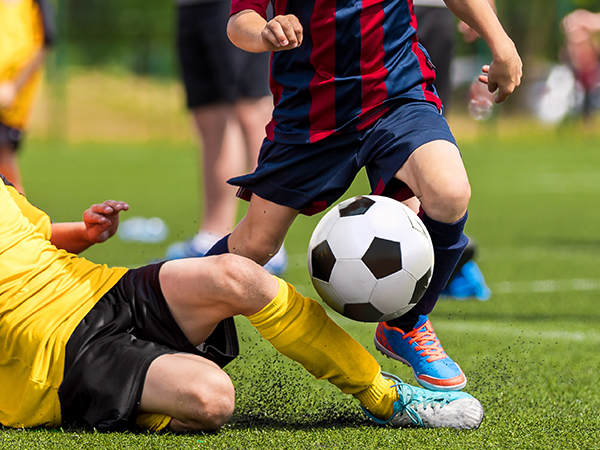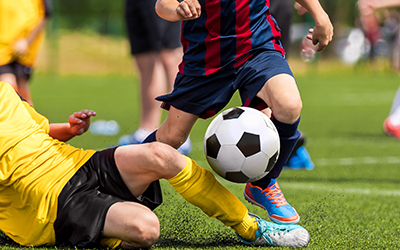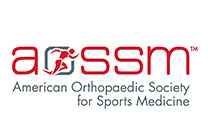
Groin injuries are becoming more prevalent today, with core injuries in sports. The groin area is a complex network of muscles, tendons, and ligaments crucial for lower body movement. Injuries to this area can escalate into chronic issues if dismissed as mere sports strains. Let’s look at how groin injuries occur and their proper management.
Prevalence of Groin Injuries in Sports
Groin injuries represent 5–10% of all sports injuries. In sports like football and ice hockey, which require kicking, high-speed direction changes, or skating motions, groin injuries account for 10–23% of all injuries.1
The Risks of Neglect
When left untreated, groin injuries can lead to chronic pain and instability. Over time, the body compensates for the injury, which can result in altered movement patterns. This compensation can increase the risk of further injury not only in the groin but also in other areas such as the hips, knees, and lower back.
Chronic Pain and Physical Limitations
Persistent groin injuries can evolve into conditions like osteitis pubis, sports hernias, or adductor tears and tendinopathy, which are characterized by ongoing pain and can severely limit an individual's ability to perform daily activities. Athletes may experience a significant decrease in performance, and non-athletes may find their mobility and quality of life impacted.
The Importance of Proper Management
Early intervention is crucial. Proper management includes rest, ice, compression, and elevation (RICE), followed by a structured rehabilitation program designed by a healthcare professional. Rehabilitation focuses on restoring strength, flexibility, and endurance to the injured area, while also correcting any biomechanical issues that may have contributed to the injury.
When to see a Doctor for Groin Pain
Here are some signs that indicate you should contact a healthcare provider:
- Persistent or severe groin pain that doesn't improve with home treatment within a few days.
- Mild testicle pain that lasts longer than a few days.
- Lumps or swelling in the groin area.
- Fever or nausea accompanying the groin
Most groin injuries can be treated non-surgically. Surgery is only considered when patients fail to respond to conservative care.
Prevention and Education
Preventive measures such as proper warm-up routines, strength training, and education on correct techniques are essential to avoid groin injuries. Athletes and coaches must be aware of the signs of groin injuries and the importance of seeking prompt medical attention.
If you are experiencing persistent groin or any of the above symptoms, get help from an expert.
AUTHOR: Srino Bharam MD, MBA is a board-certified, fellowship-trained sports medicine orthopedic surgeon and professor of orthopedic surgery specializing in the treatment of athletic injuries of the hip and groin. Dr. Bharam has over 20 years of experience in treating injuries and conditions of the hip to restore athletes and patients to an active lifestyle.












